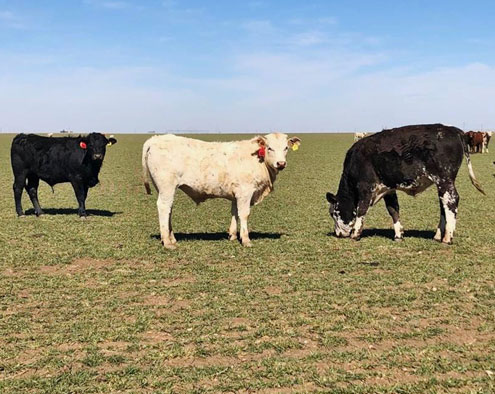By Adam Russell
San Angelo, Texas – Wheat acres were expected to perform well in areas with moisture, but market conditions could mean tough decisions for grain producers, according to Texas A&M AgriLife Extension Service experts.
Bill Thompson, AgriLife Extension economist, San Angelo, said there was concern Texas wheat acres would be down due to extremely wet fall conditions. However, National AgriculturalStatistics Service data show planted acres across the state were level with 2018.
“North of Abilene, areas received 40 inches of rain in six weeks,” he said. “We were afraid a lot of farmers wouldn’t be able to get their fields planted. There may be individual farmers who didn’t get in, but it appears most did.”

Across much of the state, especially Southeast, Central and East Texas, producers also dealt with very tight windows of opportunity to plant wheat acres due to wet conditions.
On the other hand, wheat producers with stands should experience good growing conditions due to the full soil moisture profile, Thompson said.
Dr. Jourdan Bell, AgriLife Extension agronomist, Amarillo, said wheat conditions across the High Plains and Panhandle are variable. Early planted wheat was in good condition due to October rains, but dry to drought conditions expanded in recent weeks, which deteriorated wheat conditions.
“Ungrazed, irrigated wheat is in good condition,” she said. “Early planted wheat that has been grazed is looking bare. Cattle were pulled off many pastures early because there has not been the precipitation to sustain regrowth.”
Late planted dryland wheat is not progressing quickly, she said, and stands are very thin and becoming weedy. There were trace amounts of precipitation recently, and even small amounts of rain perked up wheat fields.
Despite good growing conditions for much of the state, Thompson said 2019 could be a tough year for wheat growers eyeing profits in grain production.
U.S. acres are down 4 percent, and despite historically low planting in 2018, wheat prices have continued a downward trend, he said. Prices in Chicago have fallen 60 cents a bushel since Feb. 1 to around $4.60 per bushel from $5.20 per bushel.
Texas producers can expect prices to be even lower, $4.30-$4 per bushel, due to additional costs associated with getting grain to market, he said.
“If prices don’t change and producers are looking at $4 a bushel…that won’t get it done,” he said. “Our costs are more than that.”
Additional costs, such as treating for rust and other diseases, especially in wetter areas of the state, could squeeze margins even tighter, he said.
Thompson said wheat producers face a difficult decision of producing grain in the hopes that prices improve. Their other options are to graze out their fields and add pounds to cattle in the hope for better profits at beef markets or bale their wheat and hope for a few dollars more per acre in a low hay production year.
- “It’s time for them to make that decision,” he said. “It could be that year where they can do better grazing it out or baling it because hay has been at a premium. They’re just going to have to look at their options and put a pencil to it.
